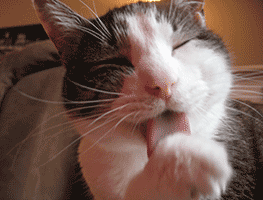Cat Shopping List
Food and Water Dish:
Food and water dishes are not all created equally. Avoid plastic food and water dishes since they are highly porous and easily scratched making them a bacteria magnet. They lack durability ESPECIALLY with a teething puppy! Ceramic dishes are great if they are coated in a lead-free glaze. Make sure there are no chips or cracks since this can allow for a higher risk of your cat ingesting part of the ceramic. Stainless steel bowls are typically the best option since they are non-porous and much easier to clean.
Food:
Many people don't think about what they want to feed their cat before bringing them home. It is important to understand that cat foods come in a large variety and you want to be careful with what you choose. Remember cats are carnivores and REQUIRE meat in their diet to survive. Cat food that is on the cheap end typically does not contain enough nutrients for cats causing pet owners to spend more money at the vet. A safe rule of thumb is to know that higher quality cat food is typically found in pet stores rather than in big box stores. Many pet stores have cat food organized by quality as well, making it easier to find exactly what you want. Remember, when first bringing home your cat to have some of the food they are used to transition them to the food you would like them to be on. Without a transition period they are more likely to suffer from digestive upset.
Brush and Nail Trimmer:
Grooming your cat is a great bonding experience for you and your cat. Daily brushing helps prevents mats from occurring on any place your cat is unable to reach. Grooming regularly also helps you to keep a close eye on any physical ailments that may be occurring with your cat. Regular trimming of your cat's nails will help to keep them dull and be beneficial in numerous ways. If you are uncomfortable with grooming your cat, make an appointment at a local groomers.
Scratching Post:
It is normal and healthy for cats to scratch. Make sure to have a scratching post in your home prior to your new cat's arrival. After bringing your new cat home, place your cat's paws on the scratching post to help encourage you cat to scratch here. Scratching relieves stress and helps put your cat's scent in your home. Once your house starts to smell more like you cat, your cat will feel more at home!
Litter Box and Scoop:
It is recommended to have a litter box for each cat in your house plus one extra one. When first bringing your cat home you will want to have a spot available for your cat to go to relieve it's self. Most cats are uncomfortable in hooded litter boxes so it is recommended to start with an open litter box. If you would prefer your cat to use a hooded litter box, than you will want to make sure you also have an open litter box so your cat can choose and get use to them both. Daily scooping of your litterbox will help to ensure that your cat continues to use it regularly.
Litter:
We recommend starting with unscented and non-clumping litter for your new cat. After your cat becomes used to their new home you can begin switching your cat to a clumping litter. For declawed cats, due to increased sensitivity in their paws from the declawing procedure, clumping litter can hurt their paw pads to push. It is best to avoid scented litters since cats can smell more with their nose than we can. Overpowering scents may make your cat avoid using the litter box. If you would like to try a scented or clumping litter but want to ensure that your cat will use it, have one litter box be what they are used to and the other be what you would like to try to get your cat used to it.
Cat Charmer:
Most cats become a bit introverted when first coming into a new home. Help them come out of there shell with a toy that allows some distance still between you and them. Cat charmers are highly recommended toys that many cats love to play with for hours.

